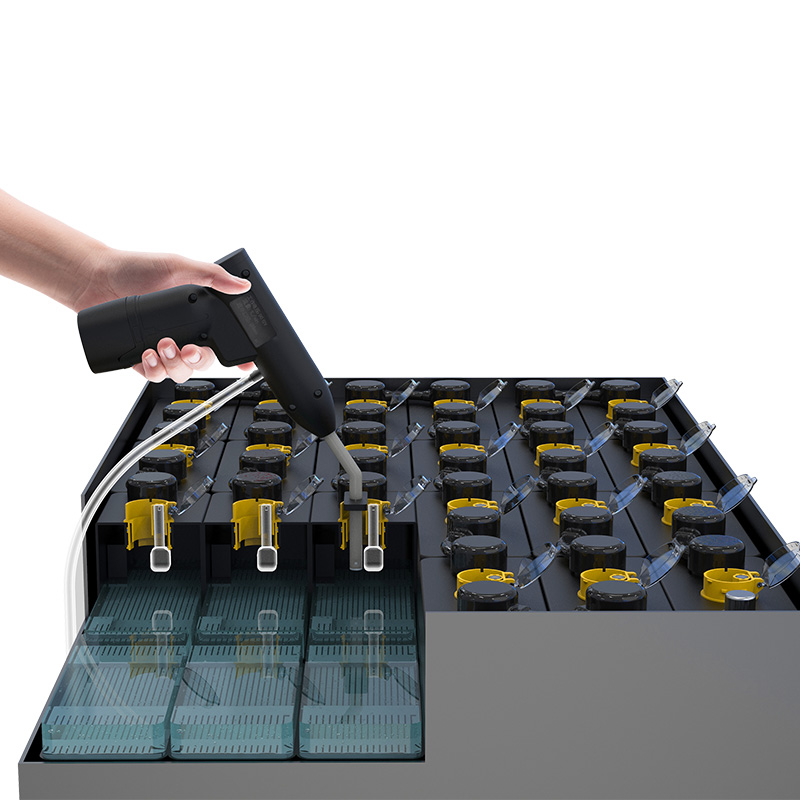With the continuous strengthening of domestic environmental protection requirements, the market share of electric forklifts continues to rise. As the heart of the electric forklift, the life of the battery is directly related to the service life of the entire vehicle. Therefore, battery technology experts will introduce how to extend the service life of electric forklift batteries.
Lead-acid batteries’ daily maintenance suggestions
一. When the battery is charged and discharged, the change of the battery liquid level:
When the battery is discharged (that is, when the forklift is used): when the battery is charged, the gas generated in the pores of the battery plate will continuously emerge due to vibration, so the battery fluid level will drop slightly.
When the battery is charging: in the pores of the battery plate, water electrolysis occurs under the action of current to generate a large amount of gas, which will cause the volume of the battery electrolyte to increase and the liquid level to rise.

二. Regarding the loss of battery fluid:
When the battery is charging, especially in the middle and later stages of charging, the phenomenon of electrolysis of water will occur under the action of the charging current, and the water in the battery fluid will be electrolyzed. Hydrogen (negative electrode) and oxygen (positive electrode) are generated and precipitated, resulting in large water consumption in the electrolyte.
The electrochemical reaction of the battery is violent in the middle and late stages of charging, and the exhausted gas will splash out of the battery with the battery fluid, but the amount of splashing is very small, and it will affect the battery electrolyte level to some extent.
During the charging process, if the electrolyte level of the battery is too high, a large amount of electrolyte will overflow and flow to the bottom of the battery case due to the volume expansion of the battery electrolyte, which will not only cause loss of electrolyte, but also cause corrosion of the battery case, seriously Affect the normal use of the battery. In order to avoid this situation, the height of the battery electrolyte level must be strictly controlled.
三. Why add pure water
In the middle and late stages of battery charging, a large amount of electrolytic water reaction is generated, which is the main reason for the lack of water in the battery electrolyte.
At any time, no matter how the battery electrolyte level changes, the electrolyte must be submerged over the plate (the plate must not expose the battery fluid), so as to ensure that the lead on the battery plate and the sulfuric acid in the electrolyte are fully reacted.
The battery should maintain the specific gravity of the electrolyte during operation, and maintain the consistency of the specific gravity of the electrolyte between each single battery. Otherwise, it is difficult to guarantee the consistency of the performance of all batteries. The better the consistency of the battery, the better the performance of the battery can be fully utilized.

四. How to add water
It is recommended to do it in the middle and late stages of battery charging, when the electrolyte volume expands the most.
Regularly observe and measure the height of the electrolyte liquid level, the liquid level should be kept within the specified standard range, not too low or too high
After replenishing the water, the liquid level of the battery electrolyte must not exceed the specified upper line, otherwise, it is easy to cause the electrolyte to overflow when the battery is charging, cause the loss of sulfuric acid, corrode the box, and pollute the environment.
If the liquid level is too low, the electrolyte will be exposed on the battery plate, and the contact with the air will cause the plate to oxidize. The specific gravity of the electrolyte is too high, which will accelerate the corrosion of the plate and seriously affect the service life.
